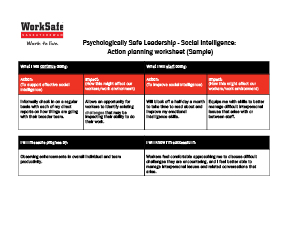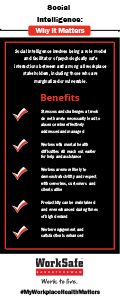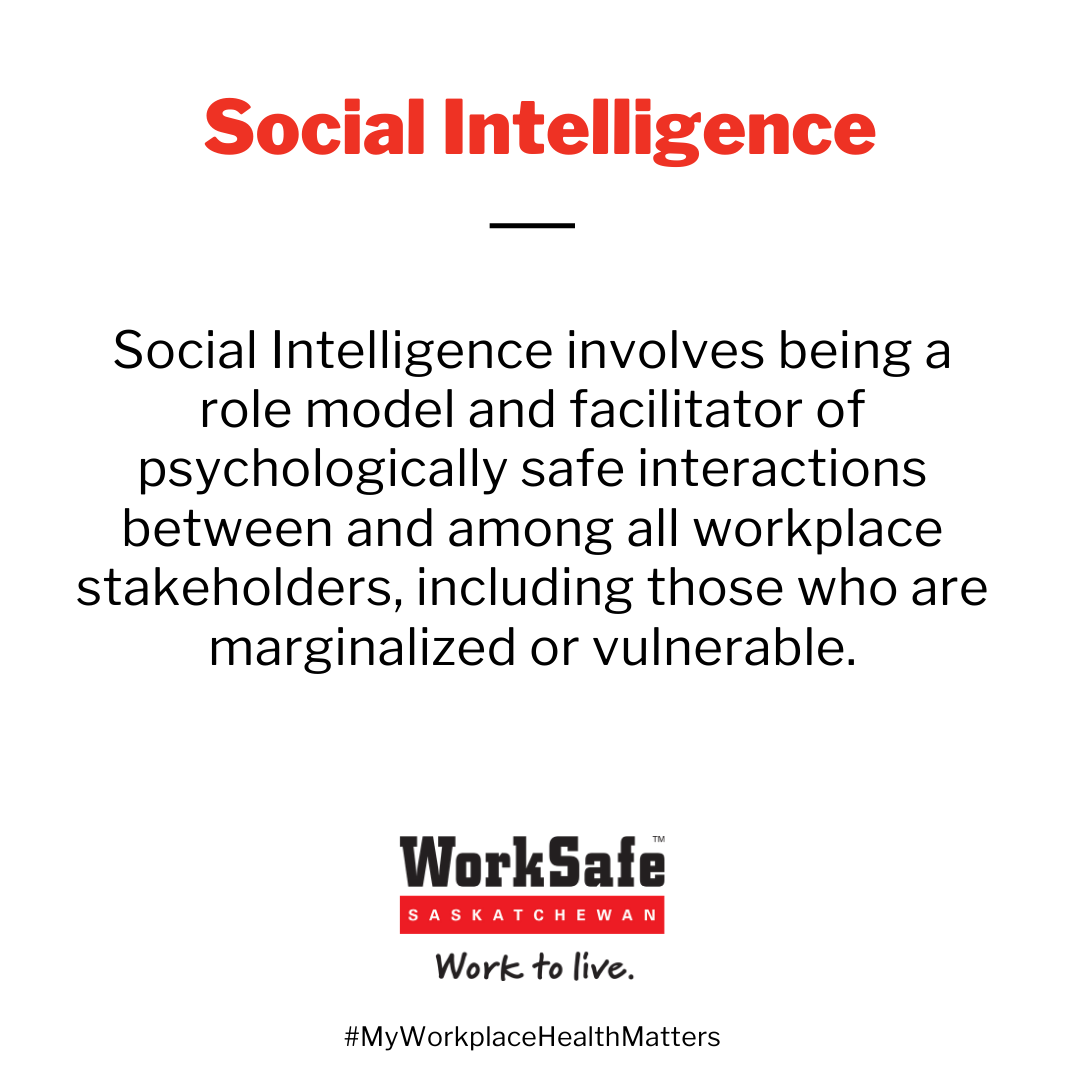 Social intelligence
Social intelligence
Involves being a role model and facilitator of psychologically safe interactions between and among all workplace stakeholders.
“A role model in the flesh provides more than just inspiration; his or her very existence is confirmation of possibilities one may have every reason to doubt, saying, ‘Yes, someone like me can do this” – Sonia Sotomayor
Overview
What is social intelligence?
Social intelligence involves being a role model and facilitator of psychologically safe interactions between and among all workplace stakeholders, including those who are marginalized or vulnerable.
How does social intelligence contribute to psychologically safe leadership?
There are many benefits to having people leaders effectively trained in social intelligence:
- Stressors and challenges at work do not have to necessarily lead to absence when effectively addressed and managed.
- Workers with mental health difficulties will reach out earlier for help and assistance.
- Workers are more likely to demonstrate civility and respect with coworkers, customers and clients.
- Productivity can be maintained and even enhanced during times of high demand.
- Worker engagement and satisfaction is enhanced.
FAQs
Action
Next steps: Committing to enhancing social intelligence as a leader
We invite you to complete the Psychologically Safe Leader Assessment (PSLA) to learn more about your current leadership skills with respect to social intelligence. By completing this confidential self-assessment, you can identify key areas in which you can improve your psychologically safe leadership skills.
The National Standard of Canada for Psychological Health and Safety in the Workplace – CAN/CSA-Z1003-13/BNQ 9700-803/2013. Retrieved from: https://www.csagroup.org/article/cancsa-z1003-13-bnq-9700-803-2013-r2018/. See also Psychologically Safe Leader (Samra et al.): Retrieved from https://www.psychologicallysafeleader.com/.




